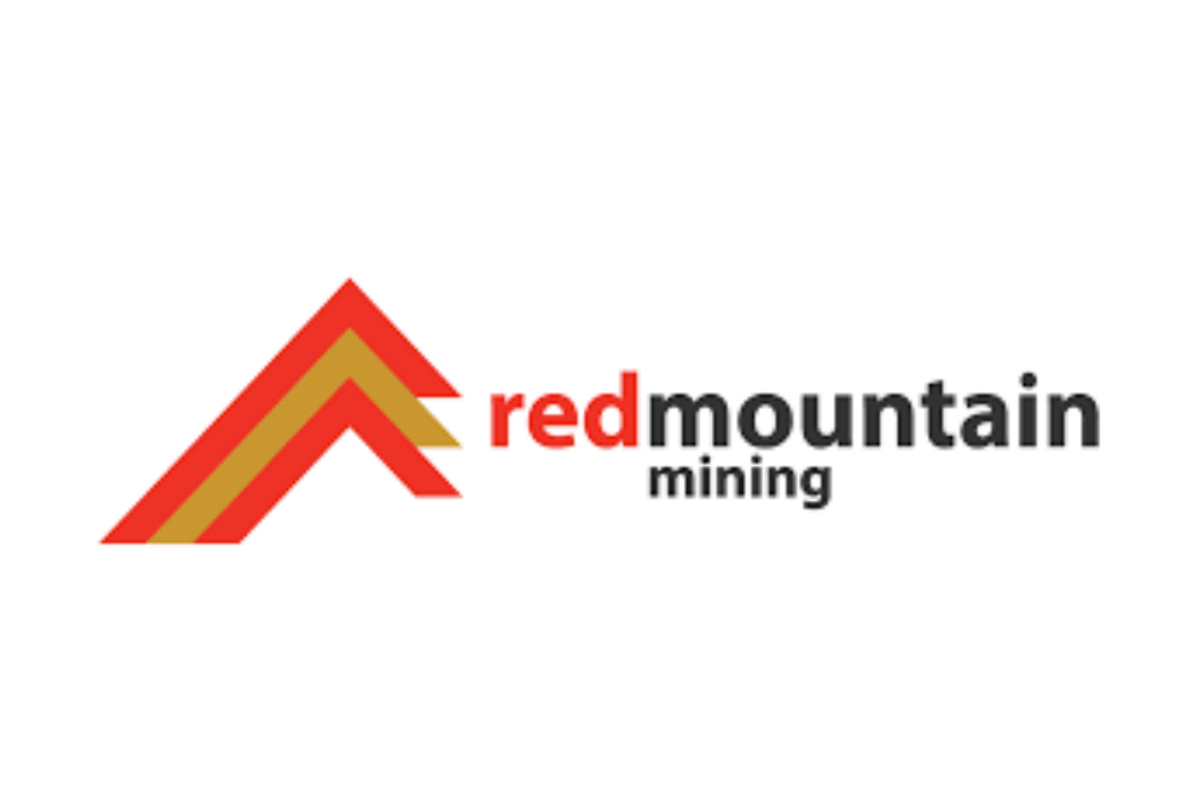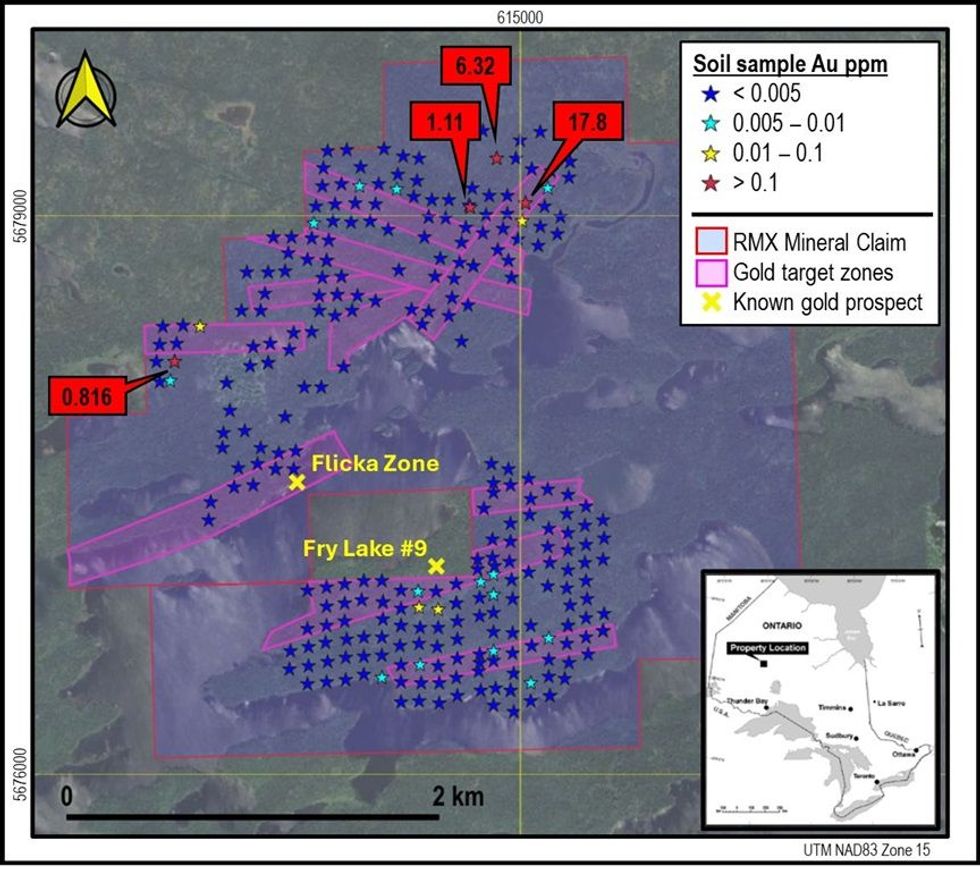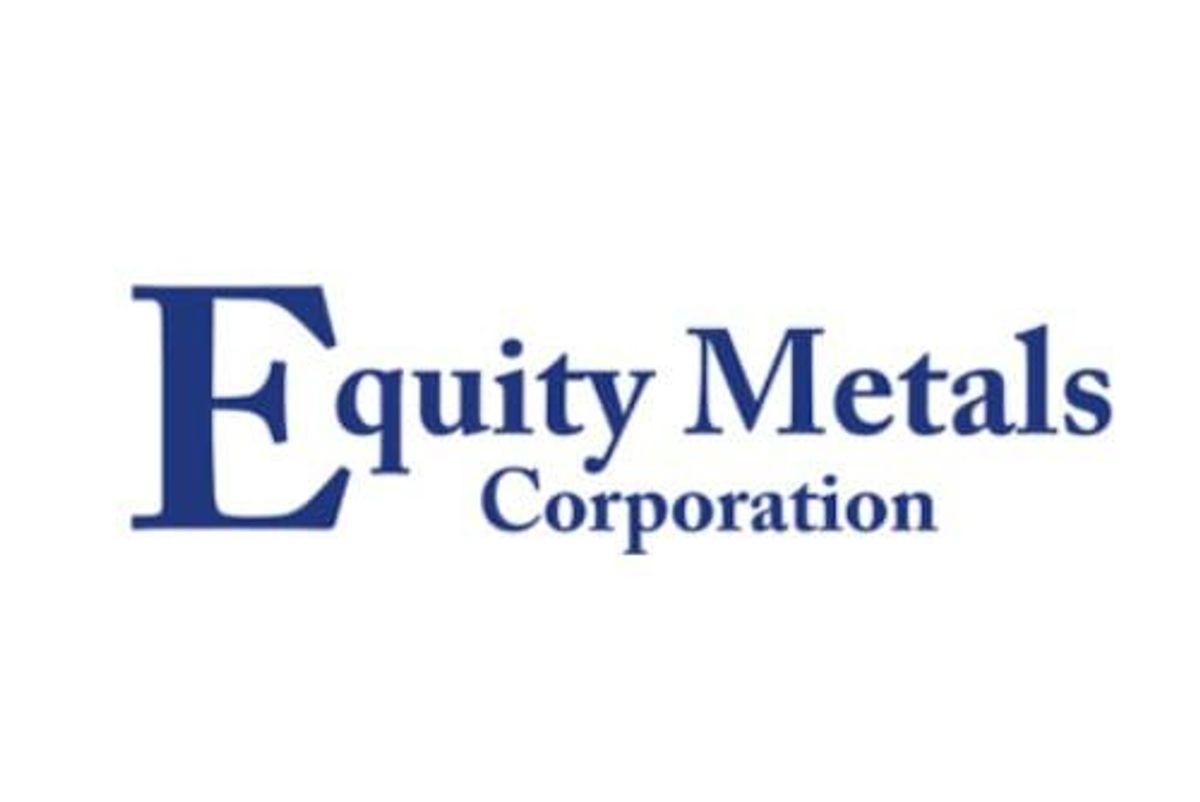
November 18, 2024
Red Mountain Mining Limited (“RMX” or the “Company”) is pleased to advise that it has received geochemical results for 284 soil samples collected during September from the Company’s 100%-owned Flicka Lake prospect in Ontario, Canada. The soil sampling was undertaken in parallel with a rock grab sampling program (refer ASX announcement: 6 November 2024). Samples were taken from around 400 locations within the Flicka Lake claims and 91 rock grab samples and 284 soil samples were collected and submitted for multielement geochemical analysis.
HIGHLIGHTS
- Exceptionally high gold assay results from Flicka Lake in Canada received potentially supporting the discovery of a new Gold and Copper Region
- In soil Gold values returned from two areas include:
- 17.8ppm (17.8 g/t Au), 6.32ppm (6.32 g/t Au) and 1.11ppm (1.11 g/t Au) returned from North of the project area.
- 0.816ppm (0.816 g/t Au) returned for a single sample from the northwest of the claims.
- These results suggest potential for a large concealed high grade vein-hosted gold mineralisation similar to that seen at the Flicka Zone
- Results from the north and northwest of the Flicka Lake project area indicate the potential for near-surface high grade quartz-vein hosted gold mineralisation
- Polymetallic copper-rich soil anomalies with values of up to 2420ppm Cu indicate the potential of Flicka Lake for volcanic-hosted base metal sulfide mineralisation, particularly in the northern part of the tenement
- Potential high grade Copper discovery provides material potential exploration upside given the program was focused on Gold
- The Company will follow up these positive gold and base metal results and the previously identified Flicka Zone prospect with further exploration as soon as practically possible
High Gold in Soil Values Highlight New Gold prospects within the Flicka Lake Claims
Four soil samples from the northern portion of the project area returned exceptionally high gold values of contained 17.8ppm (17.8 g/t Au), 6.32ppm (6.32 g/t Au) and 1.11ppm (1.11 g/t Au) gold. A further sample from the northwest of the project area contained 0.816ppm gold (0.816 g/t Au).
Highly Significant Copper Results
19 samples contained over 200ppm Cu, with peak values of 2420ppm and 1630ppm. The highest copper value of 2420ppm was returned for sample 1291262, located approximately 400m north of the Flicka Zone. Copper results (see Table 1 and Figure 2).
The gold values returned for the soil samples are shown on Figure 1 with 22 samples, listed on Table 1. As outlined in RMX’s ASX announcement of 30 October 2024, the rock and soil sampling program was designed to test ten orogenic gold target zones defined using available geological and geophysical data for the Flicka Lake tenement. Soil sampling was undertaken primarily in areas that lacked surface outcrop, where rock sampling was not possible.

The Company’s geochemical results are consistent with the results of detailed soil sampling from the high- grade Flicka Zone reported by Troon Ventures in their 2003 Assessment Report. Troon reported isolated values of up to 1.19ppm gold (1.19 g/t Au) immediately adjacent to mineralised quartz veins1.
RMX’s results from the north and northwest of the Flicka Lake project area indicate the potential for near- surface high grade quartz-vein hosted gold mineralisation, likely similar in style and tenor to the mineralisation rock chip sampled by RMX at the Flicka Zone (refer ASX Announcement 6 November 2024).
Click here for the full ASX Release
This article includes content from Red Mountain Mining, licensed for the purpose of publishing on Investing News Australia. This article does not constitute financial product advice. It is your responsibility to perform proper due diligence before acting upon any information provided here. Please refer to our full disclaimer here.
The Conversation (0)
14h
Alain Corbani: Gold to Hit US$5,000 Near Term, What About Silver?
Alain Corbani, head of mining at Montbleu Finance and manager of the Global Gold and Precious Fund, sees the gold price reaching US$5,000 per ounce in the near term. He sees real interest rates and the US dollar as the key factors to watch, but noted that other elements are also adding... Keep Reading...
06 January
Aurum advances Boundiali development with 3 ML Applications
Aurum Resources (AUE:AU) has announced Aurum advances Boundiali development with 3 ML ApplicationsDownload the PDF here. Keep Reading...
06 January
Peruvian Metals Full Capacity Throughput at Aguila Norte Processing Plant in 2025 and Focuses on Silver and Gold for 2026
Peruvian Metals Corp (TSXV: PER,OTC:DUVNF) (OTC Pink: DUVNF) ("Peruvian Metals" or the "Company") is pleased to announce production results for 2025 at its 80-per-cent-owned Aguila Norte processing plant ("Aguila Norte" or the "Plant") located in Northern Peru. The Company is also pleased to... Keep Reading...
04 January
Ongoing Drilling Continues to Return Broad Gold Intercepts
Asara Resources (AS1:AU) has announced Ongoing drilling continues to return broad gold interceptsDownload the PDF here. Keep Reading...
Latest News
Interactive Chart
Latest Press Releases
Related News
TOP STOCKS
American Battery4.030.24
Aion Therapeutic0.10-0.01
Cybin Corp2.140.00





